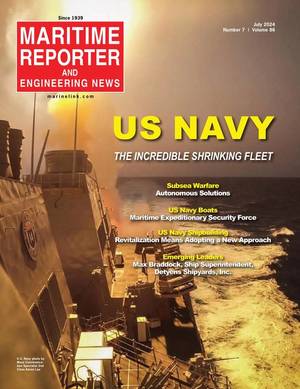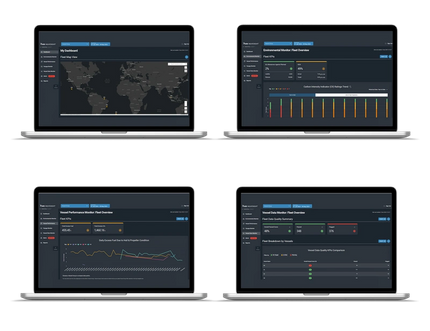By Don Sutherland
How many things that we thought were forever, that were around since the beginning, have vanished absolutely from view? If you're twenty or over, you may recall the typewriter, and large offices packed with clattering Underwoods. Audiocassettes. The beercan opener ("churchkey"). The Automat cafeteria. The steam tugboat. Depending on how far back you go, you once knew any one of these - all, if you're at the height of middle-age. But which was the last one you saw? Remember its name, and the day you saw it? Did you know it would be the last time? When did it first strike you that it's been ages since you saw one? Do you ever wish you could see one again?
Don't hold your breath. There are still steam tugs around, but you won't find them shipdocking. The Hercules in San Francisco can run, but most others need work. The steam tug Mathilda is taking water, even ashore where she's stood at Rondout Creek for years. The Catawissa's in pieces, having been towed to where she sits as salvage. The Baltimore's no longer allowed to take passengers.
Steamboats were once everywhere, every boat on the harbor, and now there is not even the look or smell or sound of them. Did you know, the last time you saw one, that you'd not see one again? Did you stop just a moment and stare extra-hard, to burn that last sighting into mind? Good for you, if you did. If you didn't, don't worry. There's plenty around right now that's as ordinary as the single-screw diesel tug, which will be just as gone from the scene. There are those old tankers, the harbor small coastal ones and those working the harbor - next time you see one, make note. It may be your last.
Execution by Decree
The situation for tankers is worse than for single-screw tugs. Everyone knows there are vessels of both types that are perfectly good, as capable of their jobs today as they were thirty or forty or sixty or eighty years ago. In Maine, there's a tug still working that was laid-down in ' 74. That's 1874. Some boats just won't wear out, but as life goes on they can get mandated out. The authorities today don't want single-screw tugs pushing petroleum barges. They also want petrochemicals, among other substances, to be carried in double-hulled vessels. Some single-skins could be outlawed within three years.
Most single-screw tugs have left New York. Survivors like the Thomas J. Brown of Brown, a smallish Gladding-Hearn build of the mid-twentieth century is among those still working with non-toxic cargoes, gravel and such in the estuaries and tributaries and silted-in reaches. The harbor would stop without them, but they're among the last of their kind in this area. The rest took their business elsewhere, where they're still fine for shipdocking, bargework and so forth in other ports up and down the coasts, along the rivers.
Single-screw tugs are legislated out of New York, because more than anything else, New York is an oil town. But up on the Great Lakes, where they work on freshwater and don't push as much oil, they say a tug built in 1950 is sometimes quite new-fangled.
It's not the same for a tanker. Double hulls are required for most of the things they carry, and they're required everywhere. These may be great boats, even pristine, but the law says all must go out of business. A good portion of the New York fleet are already tied-up; a couple, it is said, on hold until the price of steel goes up in China.
Is there an alternate future for tankers? They represent the output of the most storied builders, whose once ubiquitous products are now artifacts, on the wane - Ira S. Bushey, Bethlehem Shipbuilding, Blount Marine Corp.
Luther Blount's first tanker, Twin Tube, has found a solution to changing times - change with them. Pull out the tanks, and use her like an old-fashioned lighter; the Coast Guard now lists her as freight ship. Whether that act can be followed by other tankers is not clear, for the Twin Tube had a novel construction. Hard to say if there's a future in freight for other ex-tankers.
Personality and Charm
A tanker as live-aboard? A museum display? Plenty of tugs have come back as both. But tugs have been popular lore since the 1930s or earlier, through Little Toot and his followers. Are tankers as alluring to the popular mind as old tugboats? Would you donate a dollar to board?
Some of these boats do shout "historic," as any 1920-built vessel - which is where the Coast Guard dates the Coral Queen - is likely to do. They can seem very novel, or archaic, or quaint. Look at those old-fashioned bridge wings on the Coral Queen, even more pronounced on the 1941-built John B. Caddell, and the Mary A. Whalen, last time we saw her, on spuds in Erie Basin. To generations, that style of house was what ships looked like. Or take the Kristin Poling, ex-Captain Sam, a 1934 build with her house moved far forward, the classic tanker with high bow, all strictly business and ready for the sea. Try to find that elsewhere today - even among the newer small tankers.
Nobody tried to make them look beautiful. If they do, it's for their undisguised sense of purpose.
There are some who question how the tankers' past users will fare in the double-skin future. Can the small outfits afford the cost? If their vessels are legislated out, are they with the bathwater? Are tugs and barges always better? What about places where it gets choppy, even inside? What succeeds harbor tankers? Pinboats, mini-ATBs on the harbor? Don't laugh. At least one company expects to have two on the job next year.
For now, here's a reminder. Take a good look. The tanker you see tomorrow may be your last. Or maybe not. Maybe you'll see the Patrick or the Maspeth or Capt. Log dozens of times, high in the water and low. But make a date with yourself fifteen years hence - mark your calendar for this day in 2020. Remember to ask yourself then - when did I last see those old tankers?
July 2024


The July 2024 eMag edition of Maritime Reporter again focuses on the fleet and future of the U.S. Navy, from crewed surface fleet to submarines to uncrewed autonomous systems.
Read the Magazine
Revitalizing U.S. Shipbuilding Means Adopting a New Approach
U.S. Navy Needs to Grow, but in fact it is Shrinking
Subscribe for
Maritime Reporter E-News
Maritime Reporter E-News is the maritime industry's largest circulation and most authoritative ENews Service, delivered to your Email five times per week









